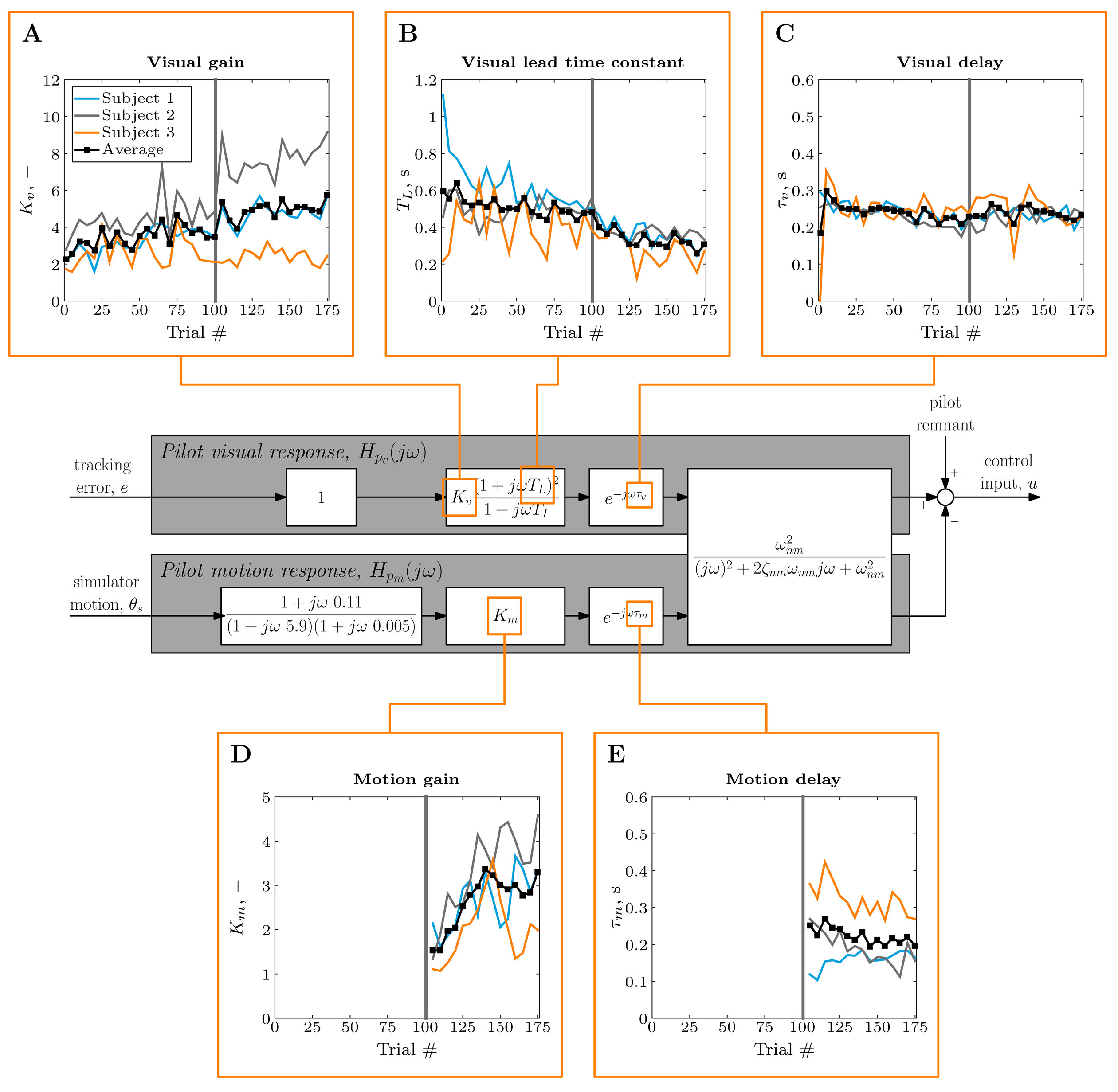Quantitative analysis of manual control skill acquisition, retention, and transfer.
In many training applications, it is surprisingly difficult to truly probe and quantitatively measure the skill level of trainees. Therefore, mostly measures of task performance are used for analyzing skills as well as training effectiveness. However, such performance measures tend to be only moderately sensitive to suboptimal training environments (as humans adapt) and provide no specific insight into how developed manual control skills may be degraded. This is especially problematic for evaluating simulator-based training of manual control skills, as for such low-level control it is known that human controllers develop automated responses to continuous feedbacks from the environment. This strong environmental dependency means
that a risk exists of teaching skills that do not fully transfer to the real environment.
In this project, performed in close collaboration with NASA Ames Research Center, we develop a cybernetic, human control model-based, approach for quantifying the effectiveness of manual control skill training. We use (multi-channel) human control modeling and identification techniques to objectively track the skill level of human controllers over time. Not only does this approach provide direct and objective data on trainees skill levels, it also explicitly shows the temporal scales of learning: which human control behavioral parameters (e.g., gains, delays, etc.) are quickly optimized during training and transfer well do different tasks or environments, and which slowly adapted characteristics should perhaps be actively emphasized in training programs.
In recent experiments (see example from this paper below), this approach is found to provide unique insight into human controllers’ control skill development and the transfer of learned skills to a different environment (e.g., fixed-base simulator training vs. moving-base evaluation). In future work, we will utilize our cybernetic approach to verify the effects of imperfect simulator motion feedback and additional outside visual cues, as often present in flight simulators used for pilot training, on initial manual control skill training. Furthermore, by explicitly tracking the retention of such skills over longer periods of time, we plan to collect quantitative data to support the development of optimal recurrent training procedures for skill-based manual control.



